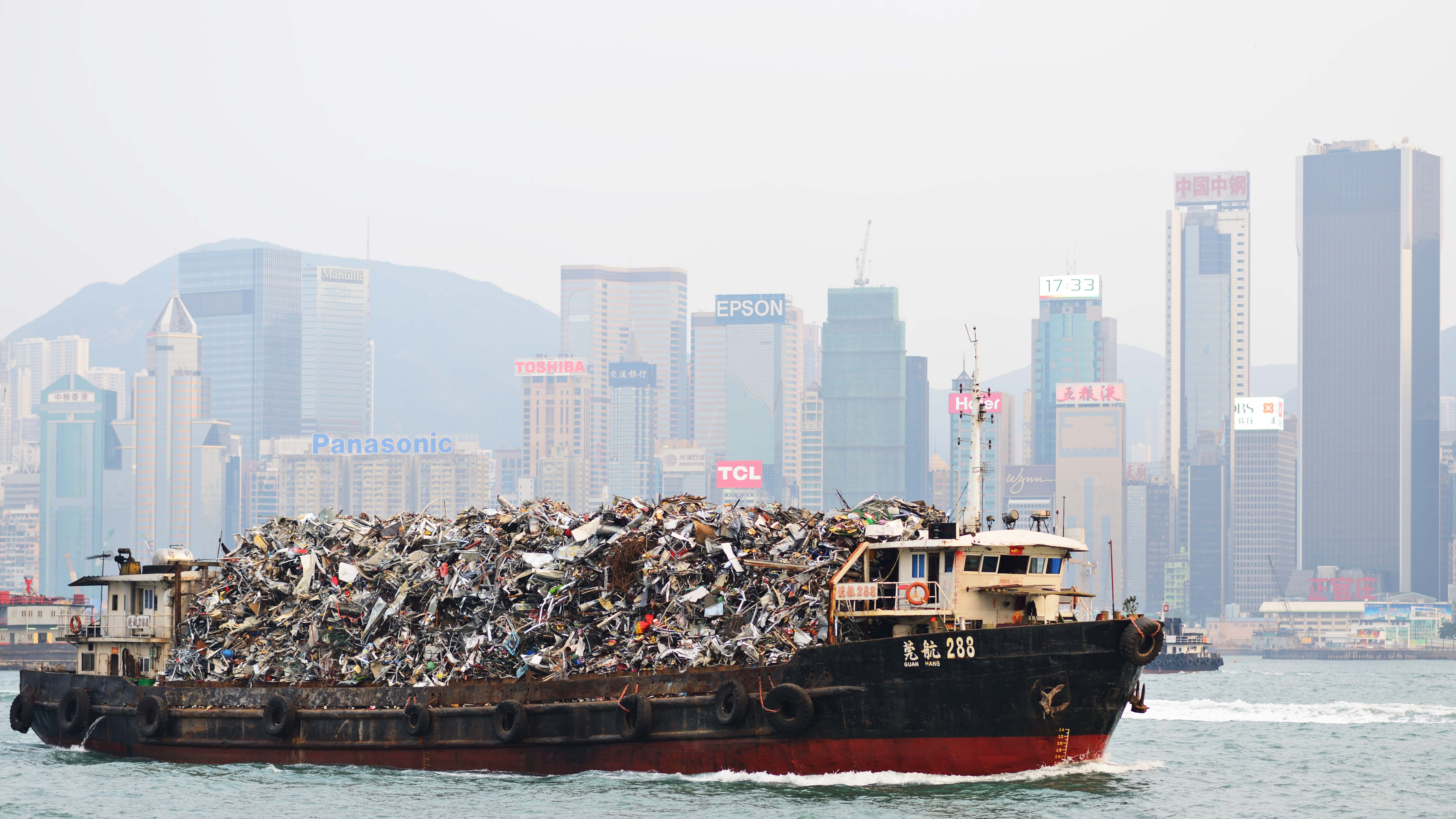
According to Tomra the e-book aims to address widespread concerns about China’s National Sword standard, introduced to the World Trade Organization in July 2017 and fully implemented on 1st March 2018, which demands higher purity levels in recyclable materials entering the country. This standard is expected to be expanded to include a total of 16 materials by the end of this year, and to add a further 16 materials by the end of 2019.
National Sword has sent shock waves through the recycling industry by requiring much recyclable material arriving in China to have purity levels greater than 99.5 %. This is a significant increase from the 90-95 % purity levels previously accepted and will have far-reaching consequences: China is the world’s largest importer of recycled material.
Tomra’s e-book explains why, for businesses striving to meet the new standard, adding more manual pickers is not a sustainable option, and why sensor-based mechanical solutions are financially smarter. The publication – titled ‘National Sword – No Need for Fear!’ – is available online and downloadable free-of-charge.
Exporting recyclable materials will now be more expensive
Tomra’s e-book opens with a reality-check, warning that it will not be practical for scrap and recycling facilities to look for single-country replacements for exporting waste. Recycling facilities are likely to find they must split their waste exports between multiple countries, which will increase sales costs. Increases can also be expected in transportation costs because ships taking waste to China are usually able to make a cost-effective return trip loaded with consumer goods, whereas ships going to other countries often require additional payment for returning empty.
The answer to this new challenge is to improve the quality of recyclables by removing more impurities.
One short-term way of raising purity levels with existing recycling equipment is to slow down the belt and add manual pickers to the final sorting stage. This approach might seem attractive because it requires little initial investment, but over time, it significantly increases operating costs. Adding two or three pickers can easily inflate annual processing costs by €82,000 ($100,000) or more, and a slower processing speed will reduce productivity and income.
Equipment upgrades make most sense
A better solution is to upgrade the recycling circuit either by adding modern technologies to the existing recycling configuration or by constructing a new facility. This will reduce the number of pickers required, enabling more efficient workforce utilization to reduce overhead and long-term operating costs. The cost of investment in new equipment is quickly recovered through increased productivity.
According to Tomra the e-book acknowledges that some equipment upgrades require complete circuit add-ons and more space, whereas other technologies can be added onto existing equipment in the circuit with minimal space requirements and low installation costs. For example, TOMRA’s new Laser Object Detection (LOD) system can be mounted onto the same platform as the AUTOSORT and FINDER systems to detect materials such as black plastics, rubber and glass. The LOD system can also remove printed circuit boards (PCBs) – and TOMRA’s laser technology increases current circuit purity levels by as much as four percent, allowing scrap recyclers to achieve China’s purity requirements without significantly increasing energy consumption and costs.
For zurik and zorba non-ferrous products, scrap operations can attain National Sword purity levels with the combined technologies of Tomra’s X-Tract and Combisense machines. By passing zorba through an X-Ray Transmission unit to separate aluminium from heavy metals, X-Tract can achieve aluminium purities of 98-99 percent. From the remaining heavy metals, Combisense then sorts out valuable fragments of copper, brass and grey metals.
Complementing these machines, Tomra’s enhanced LIBS (laser-induced breakdown spectroscopy) sorting technology employs a laser which can monitor the entire width of the belt, eliminating the complex and costly need to separate materials into single lanes. In the separation of different aluminium wrought alloys, this enables sorting accuracies of 99 percent purity (or greater) with high throughputs of three to seven tons per hour.
Tom Eng, Senior Vice President and Head of Tomra Sorting Recycling, commented: “National Sword has understandably been a source of great concern to many recycling operations, particularly those not yet attaining such high purity levels. Tomra’s e-book addresses this challenge and shows that the necessary technical solutions already exist. Investing in new technology will enable businesses to comply with tougher new regulations, whether they come from China or elsewhere in the world. What’s more, customers will pay recycling businesses a higher price for a higher quality product.”









